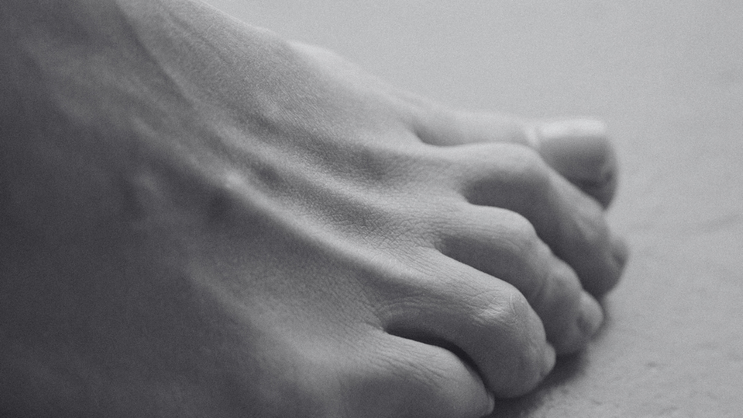A Comprehensive Guide to Footwear for Bunions
Footwear for Bunions
If you struggle with bunions, you will know that choosing the right shoes that won’t cause discomfort can be a struggle. However, we still want to look our best when out and about and bunions shouldn’t be a reason for embarrassment or distraction when looking to enjoy ourselves. The following aims to provide you with the necessary tools to find the right footwear or stretch your current shoes where possible as well as answer some of the common questions that you might have concerning footwear and bunions.
Why the Right Footwear Is Important
Choosing the right footwear is crucial for managing bunions and overall discomfort. The right shoes can help alleviate pain, prevent further deformity, and provide overall comfort. Proper footwear supports the foot's natural shape, reduces pressure on the bunion, and minimises irritation, making daily activities more comfortable and less painful.
Can Bad Footwear Cause Bunions?
It really depends. The common belief for a while was that tight shoes were the main cause of bunions but there are many differences in opinion on the matter. Other causes such as genes and foot injuries, as well as arthritis in the toe, are also seen as leading causes. While there is no real conclusion on either side, tight or ill fitting shoes can certainly be a contributor to bunions and other foot related ailments and with bunions being far more common with women who are more likely to be wearing tight fitting shoes or high heels, it is important to be aware of and try and maintain comfortable footwear where possible. This is of particular importance to those where bunions or foot conditions are prevalent in the family already.
Can Bad Footwear Make Bunions Worse?
Yes, wearing the wrong type of footwear can exacerbate bunions. Tight, narrow, or poorly-fitted shoes can put excessive pressure on the bunion, increasing discomfort and inflammation. High heels, in particular, are notorious for pushing the toes forward and compressing the forefoot, which can accelerate the misalignment of the big toe. Over time, this added stress can worsen the bunion, lead to other foot problems, and may even necessitate surgery. Therefore, avoiding footwear that crowds the toes or puts undue stress on the forefoot is essential for bunion management.
Tips on Stretching Shoes for Bunions
If you have shoes that are too tight but otherwise supportive, stretching them through the use of shoe stretchers or other tools can provide relief. It is worth noting however that in most cases, it is better to buy a more comfortable pair of shoes than stretching. Stretching is typically a temporary measure and there are other considerations to make than simply allowing room for the bunion.
- Shoe Stretchers: Invest in a pair of shoe stretchers specifically designed for bunions. These devices can help widen the toe box at the end of shoes, providing more room for your feet.
- Heat and Stretch: Apply heat to the tight areas of your shoes using a hairdryer, then put on thick socks and wear the shoes until they cool. The heat softens the material, allowing it to stretch.
- Freezing Method: Fill a resealable plastic bag with water, place it inside the shoe, and then freeze it. As the water turns to ice, it expands, gently stretching the shoe.
- Professional Stretching: If home methods aren't effective, consider taking your shoes to a professional cobbler for stretching. This is probably the best option for shoes you don’t want to risk damaging.
Picking Out the Right Footwear
As mentioned above, stretching should be seen as a temporary solution and the better solution in most cases is to invest in a new pair that provides better support and a wider but still comfortable fit. Thankfully, there are plenty of brands providing quality footwear with bunions and other foot conditions in mind so you don’t have to worry about sacrificing looks over comfort.
- Look for a Wide Toe Box: Shoes with a wide and deep toe box provide ample space for your toes, reducing pressure on the bunion.
- Opt for Low Heels: If you must wear heels, choose ones with a low, wide heel base. Flat shoes are generally better but if you want to strut your stuff in heels, you can still do so.
- Choose Soft, Flexible Materials: Leather and suede are ideal materials as they mould to the shape of your foot and provide a comfortable fit. Avoid stiff materials that can cause irritation such as plastic.
- Orthotic Inserts: Orthotic inserts are custom-made or over-the-counter insoles designed to support and align the foot. They are particularly beneficial for individuals with bunions, as they help redistribute pressure away from the bunion area, providing relief from pain and discomfort. As with shoes, orthotics are now coming in more fashionable and discreet looks so there is plenty of flexibility if you are worried about appearance or them being particularly noticeable.
- Adjustable Straps and Laces: Shoes with adjustable features, like straps or laces, allow you to customise the fit, ensuring comfort and preventing the shoe from pressing against the bunion.
Managing bunions involves more than just choosing the right footwear, but it is a crucial step in minimising discomfort and preventing further complications. By prioritising comfort, support, and proper fit, you can significantly improve your quality of life and keep your feet healthy.
If you are struggling with bunion pain or foot pain in general and would like some advice on footwear or getting orthotics, please get in touch. We are available throughout Leeds for new patients and can provide a full consultation to help you get to the root of the problem and address any concerns you may have. I look forward to hearing from you.


